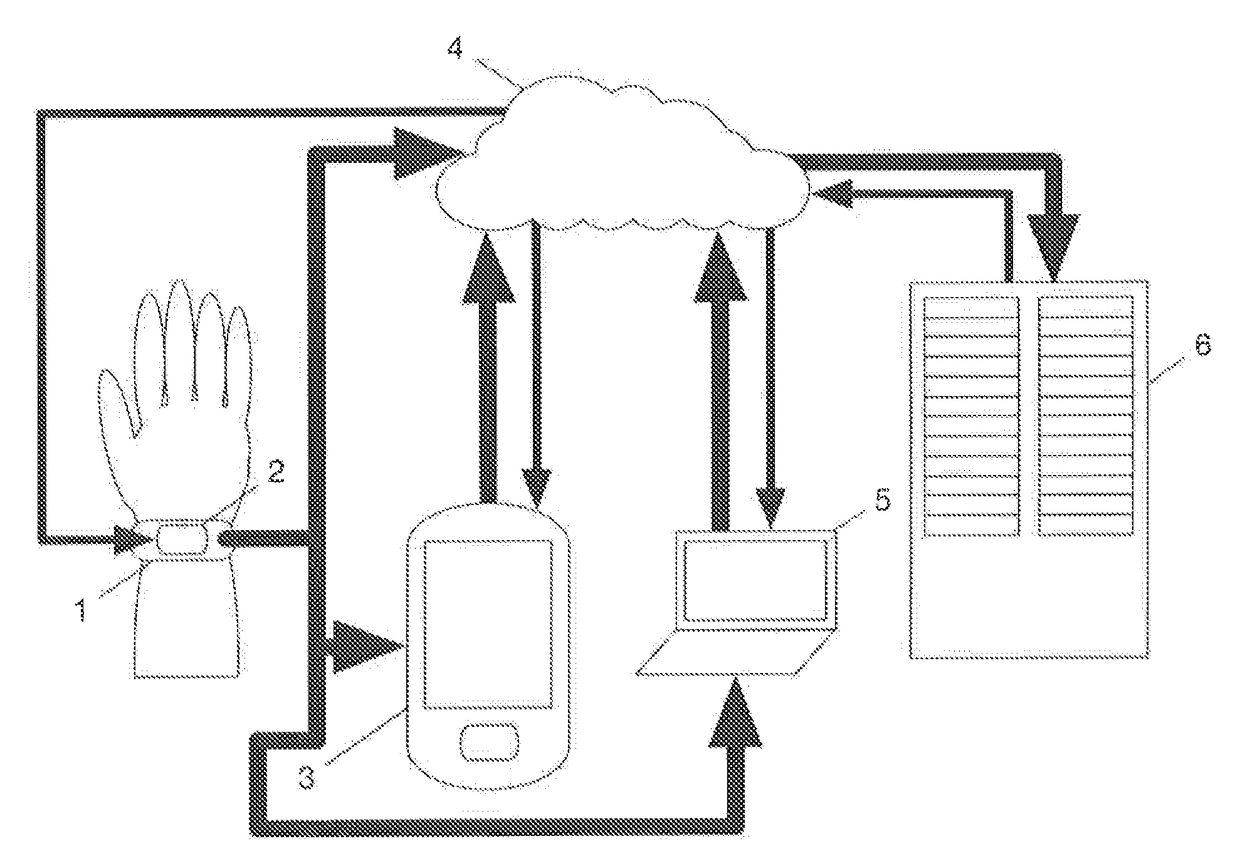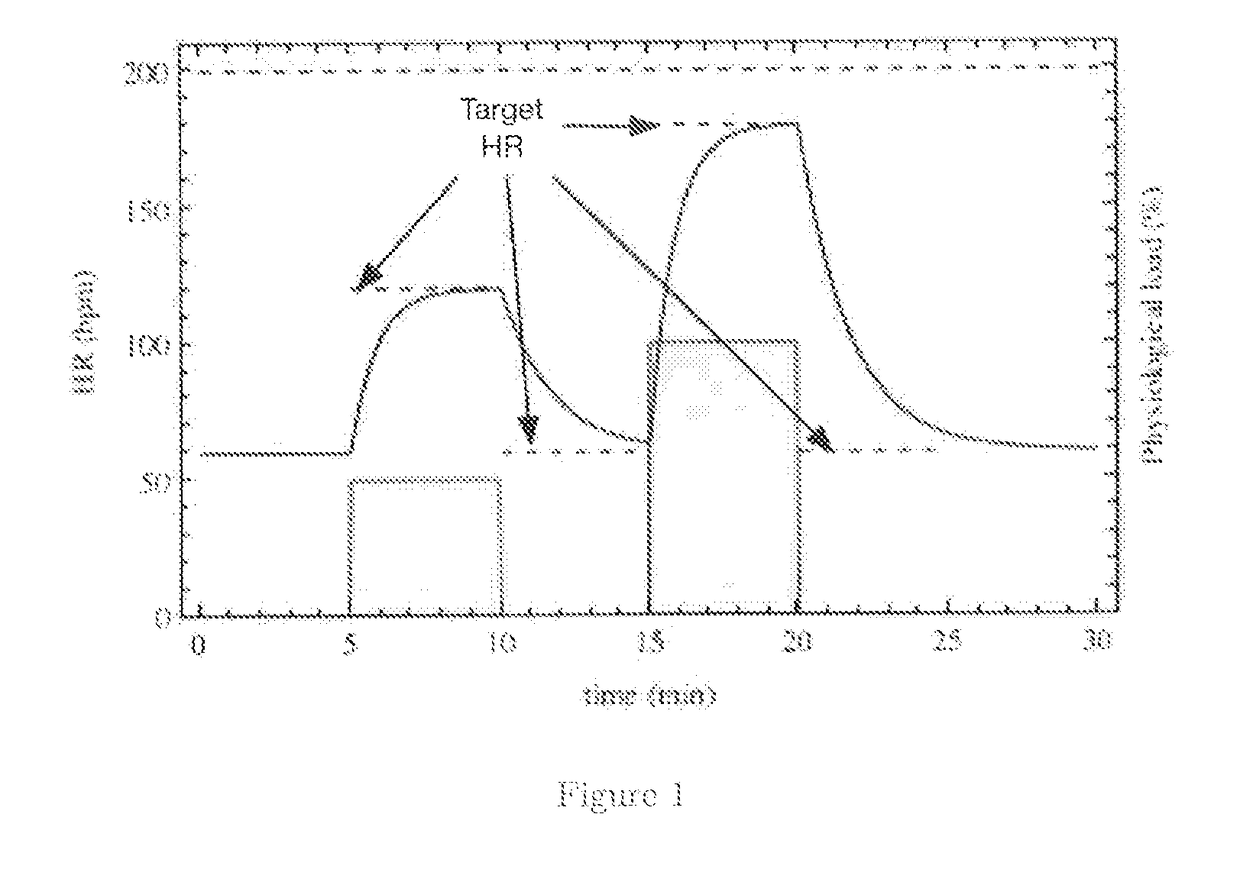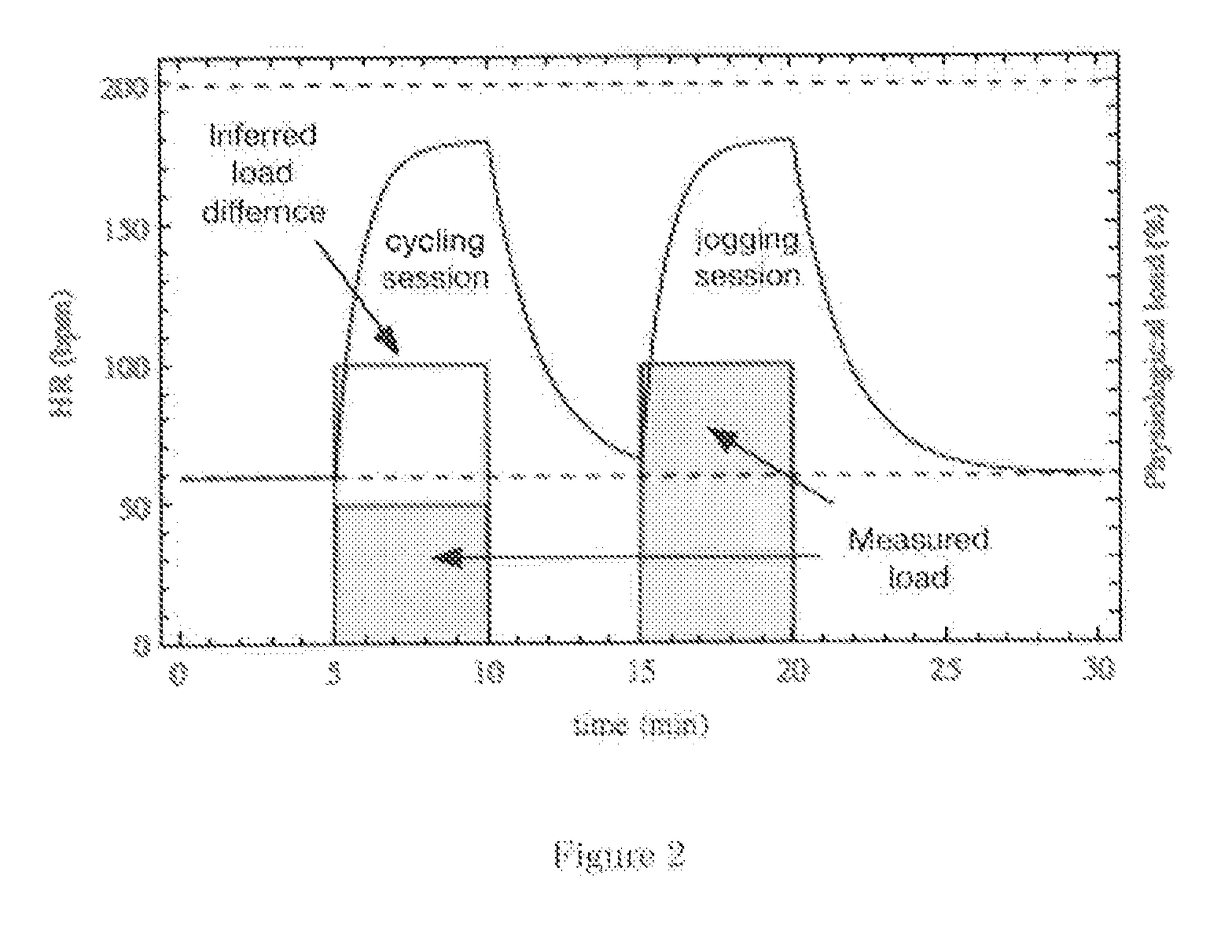Biologically Inspired Motion Compensation and Real-Time Physiological Load Estimation Using a Dynamic Heart Rate Prediction Model
a heart rate prediction and motion compensation technology, applied in the field of physiological parameters non-invasive monitoring, can solve the problems of many sensor technologies used to estimate hr, difficult to separate hr and motion artifacts, and loss of accuracy, and achieve the effect of high-energy phosphate bonds
- Summary
- Abstract
- Description
- Claims
- Application Information
AI Technical Summary
Benefits of technology
Problems solved by technology
Method used
Image
Examples
Embodiment Construction
[0031]The following detailed description and drawings describe different aspects of the current invention. The description and drawings serve to enable one skilled in the art to fully understand the current invention and are not intended to limit the scope of the invention in any manner. Before the present methods and systems are disclosed and described, it is to be understood that the methods and systems are not limited to special methods, special components, or to particular implementations. It is also to be understood that the terminology used herein is for the purpose of describing particular aspects only and is not intended to be limiting.
[0032]The premise of the current invention is demonstrated using a simple example model. The model is defined mathematically, some of its basic behaviors are demonstrated and in addition, the novel ways in which it can be applied are also presented. The model takes some measure of physical activity level as input—in this case this is demonstra...
PUM
 Login to View More
Login to View More Abstract
Description
Claims
Application Information
 Login to View More
Login to View More - R&D
- Intellectual Property
- Life Sciences
- Materials
- Tech Scout
- Unparalleled Data Quality
- Higher Quality Content
- 60% Fewer Hallucinations
Browse by: Latest US Patents, China's latest patents, Technical Efficacy Thesaurus, Application Domain, Technology Topic, Popular Technical Reports.
© 2025 PatSnap. All rights reserved.Legal|Privacy policy|Modern Slavery Act Transparency Statement|Sitemap|About US| Contact US: help@patsnap.com



